January 7, 2003 was as cold as a winter day in Louisville gets. The temperature hovered below freezing and winds gusted between buildings Downtown. That Tuesday was the day I stood in front of what was then Louisville’s “Porno Block” to protest the demolition of five historic buildings—the entire Third and Jefferson Streets National Register Historic District—to make way for the $110 million Marriott Hotel, paid for with some $45 million in city funds.
That year, I was 19 and home on winter break from college where I was studying architecture. After distributing flyers in several neighborhoods announcing the protest, I made up a handful of signs under the banner of “Saving the City,” and made my way to the corner of Third Street and Jefferson Street where I would stand for the next eight hours.
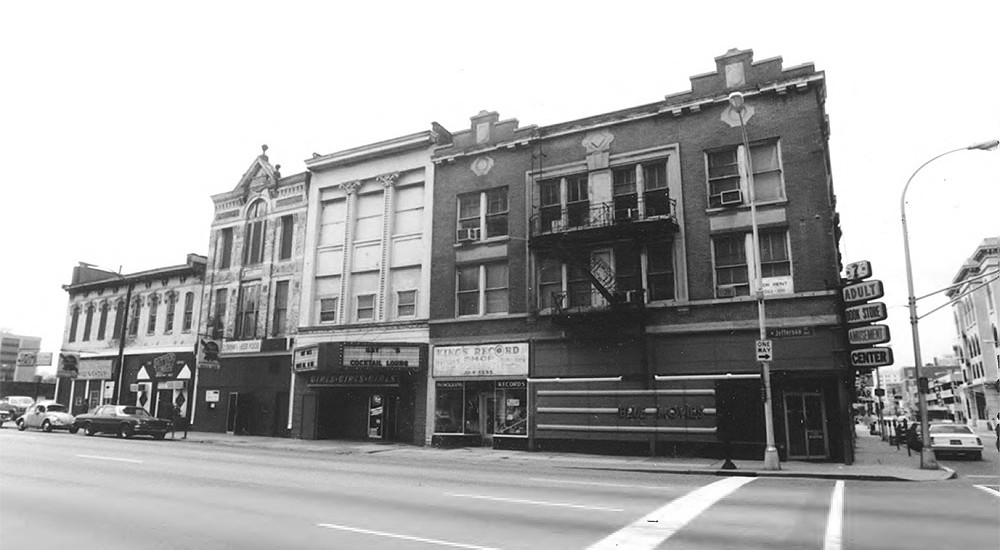
“I remember that day,” Deborah Stewart, a Louisville realtor and then president of the Louisville Historical League (LHL) told Broken Sidewalk this summer. “I bought you a pair of gloves, because it was a very cold day, and you were really, really cold.” Stewart was one of a handful of people who braved the cold weather to stand with me on the corner in support of the old buildings.
“It was a foregone conclusion that the ‘Porno Block’ was going to go, and that the Marriott was going to be built,” Stewart recalled. While I had to return to school, Stewart convened a group of architects to continue the charge of saving the last remnants of Louisville’s last block German-Jewish architecture, which was listed on the National Register of Historic Places in 1988.
“What I did was call together a group of architects, because it seemed to me to be an architectural concern,” Stewart said. She convened a meeting with representatives from Marriott, the local architecture community including Steve Wiser and Bob Bajandas among others, and Charles Cash, the head of Metro Planning & Design. “Charles is an architect himself and very much a preservationist,” Stewart added. She credits Cash with ultimately saving the Coleman facade, which now forms the entrance to a sports bar in the hotel. “I don’t think we had settled on the Coleman facade,” Stewart said. “We were just trying to get something incorporated into the Marriott that would represent our town.”
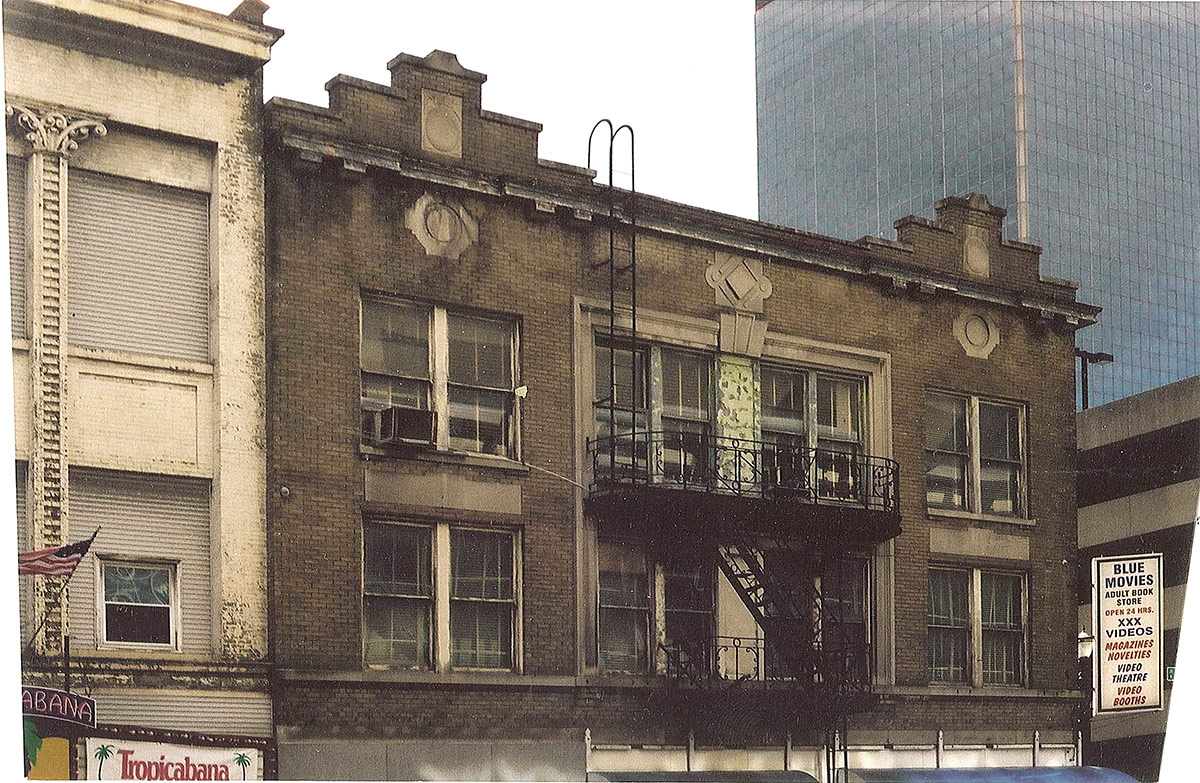
“The Marriott architects at our meeting were saying, ‘Oh we can’t possibly do this. We can’t possibly add any of the facades to our construction because it would cost over a million dollars’,” Stewart recalled. “And I said, ‘That’s interesting. We just happen to have somebody here that has already done that recently—who has saved a facade. I’m sure they would be able to provide an estimate for what it would take to save at least one of those facades. As it turned out that architectural firm did provide an estimate so we were able to convince the architects and designers of the Marriott that this was not prohibitively expensive. That we could indeed do this and that it would serve the community really well. And it would enhance their business.” I think most would agree today that the Marriott is better off for saving the facade.
That time was formative for me in shaping my views on preservation, development, and my love for Louisville—and added to the frustration when history repeated itself at the Omni site. I was happy to have helped spur a conversation that others were able to carry on and make a physical, lasting mark on Downtown. Saving the Coleman facade was truly a group effort of the city, the developer, and the community coming together. “I credit not only the LHL and other preservationists within Metro, but I credit Charles Cash who was the insider who really knew how to get this done.” I concur.
As part of the Marriott project, key portions of the remaining facades—chiefly the stone details—were saved and put in storage for future reuse. Being too young to remember previous buildings “put in storage,” I believed then that this meant they would soon resurface in another building project. Three years later, I stumbled across those stone pieces scattered among the tall weeds atop the Ohio Street landfill, the future site of the Botanica waterfront botanical gardens. The city had taken the facades to the dump.
It turns out this is a fairly common occurrence for buildings “put in storage.” After digging through other buildings from decades ago that were also dismantled and stored, it turns out there’s a veritable graveyard of zombie buildings, not dead but certainly not alive, floating out there across the city. And many appear to be unaccounted for.
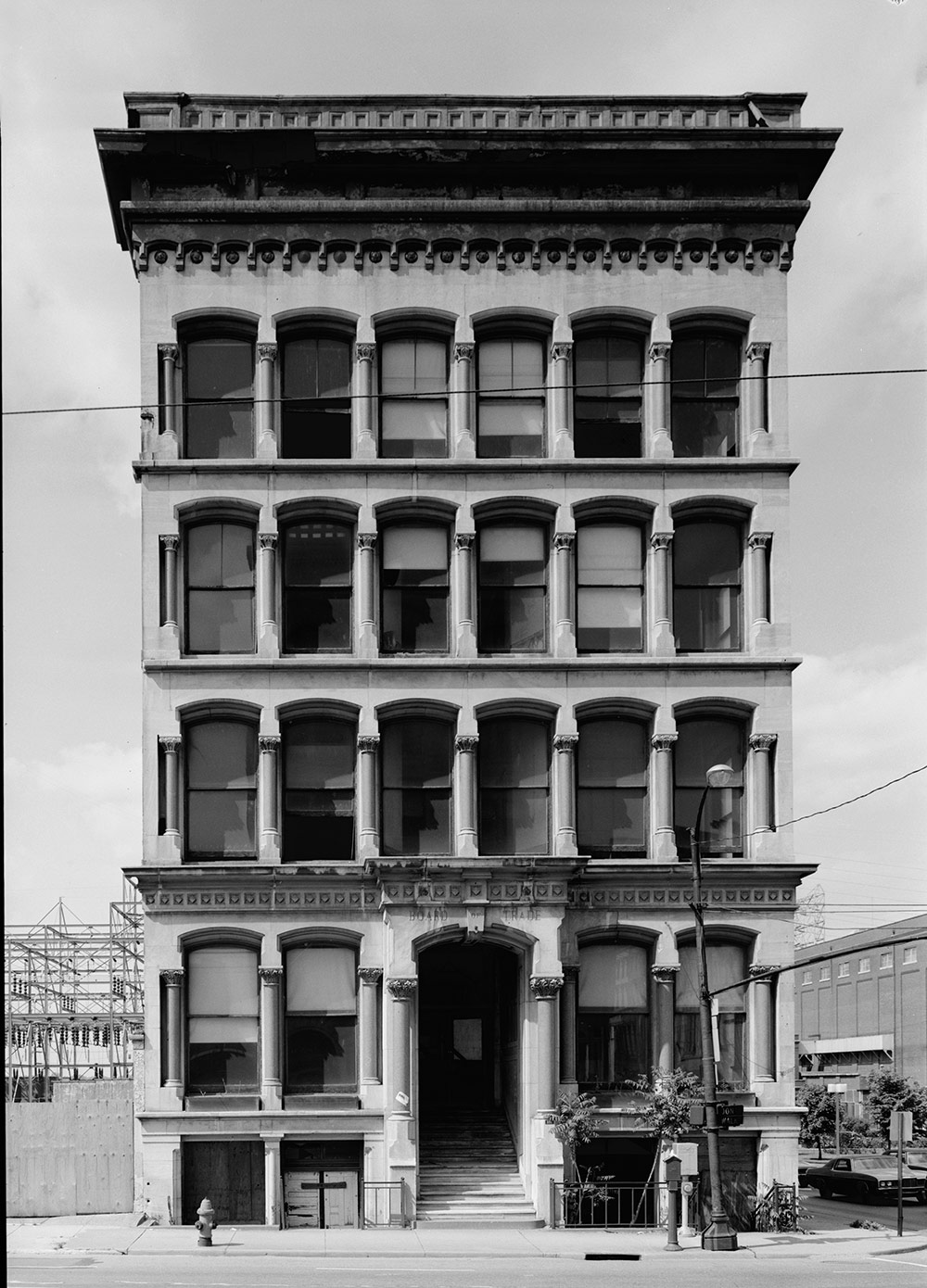
This summer, I began asking questions of Metro Louisville to figure out where the rest of the facades were stored, who was responsible for them, and how someone would work with the city or other entity to use the building pieces in a new project. I wanted to issue a call to the community to reuse the resources scattered and forgotten among the weeds. Those questions, it turns out, were not easy to answer. After weeks of back-and-forth, the city went silent, and I couldn’t get answers from anyone about what was going on.
Until yesterday, when the city issued a press release tackling the issue, apparently in lieu of answering my questions. “In light of the recent conversations about the future of the old Water Company building,” the press release said, “the city wants to open a more general dialogue with the community about potential reuse of other historic buildings that the city maintains, as well as a more proper storage setting for them.”
The city referenced three facades—the old Board of Trade building once located on the corner of Third and Main streets and two of the old “Porno Block” buildings—that would be the target of a “community conversation” around the facades’ reuse.
“This is an opportunity to engage the public to seek ways of improving the process of documentation, reuse, and the preservation of our cultural heritage,” Cynthia Johnson, Metro Louisville Historic Preservation Officer, said in the release. “The group will look at ways to develop new practices and improve existing methods for heritage management.”
And while I applaud the city for taking action in the case of these facades, we should be careful to draw the distinction between reusing these discarded pieces and accepting building facades as an acceptable form of preservation. So-called “facadism” is not historic preservation. And while it sometimes is used as a compromise between preservation and demolition—a last-ditch effort to save something of what once existed—we should recognize it as a failure of preservation in the city, not a victory.
According to Metro Louisville, “This work group is a precursor to a larger community-wide initiative to take a more proactive approach to protecting and preserving the city’s most endangered historic structures. This larger initiative will be led by Louisville Forward and engage all community stakeholders to ensure we preserve our rich history and plan for redevelopment of our treasured assets.” If you’d like more information on the work group, contact Johnson at 502-574-2868 or at Cynthia.Johnson@louisvilleky.gov.
It’s good news that the city suddenly cares about these building remnants after decades of being out of sight and out of mind—and maybe something will come of them. Rebuilding a building from storage is exceedingly rare, with only a couple local examples: the Coleman facade and the University of Louisville’s Playhouse. (A doorway from Chicago was also incorporated into a new building on Lexington Road in St. Matthews a while back.)
As we prepare to potentially put another building facade in storage—the old Louisville Water Company headquarters—let’s take a look at nine building facades and pieces that we know are already in storage—somewhere. Not all of these are under the control of Metro Louisville, but they were saved instead of being tossed on the trash heap. If you know of others, please leave a comment below.
Third and Jefferson Streets Historic District
We’ve already discussed these buildings at length, but here’s a quick overview of their history. According to a National Register listing, the buildings dated from 1883 to 1908 and represented the last remaining vestige of German and Jewish commercial architecture in the center city. The rest of it was town down for the convention center across the street.
The buildings ranged in style from Italianate, Romanesque, Chicago School, Classical Revival, and
Eclectic and displayed fine stone and brickwork.
The stone facade pieces still exist at the old Ohio Street Landfill, as mentioned above. Read more about the district here.
[Photo credits: Two historic images courtesy UL Photo Archives – Reference, Reference. Photos from 1987 by Joanne Weeter / Courtesy National Trust; the color photos by Branden Klayko / Broken Sidewalk.]
Board of Trade
The Board of Trade building, aka the Lithgow Building, was built in 1873 at 301 West Main Street and demolished just after its 100th birthday in 1975 for a road-widening project. The building’s demolition was very controversial at the time. Located at the corner of Main Street and Third Street, the site of today’s Galt House Waterfront Plaza, the building was among Louisville’s finest, designed by prominent architect Henry Whitestone, who designed other buildings on Main Street and many elegant mansions in Old Louisville.
According to the Library of Congress, a mural from another demolished building at 420 South Fifth Street was installed inside a restaurant at the Lithgow in 1960. It seems building component reuse has a history with this one. The Board of Trade’s facade was built from ornately carved grey limestone with pink marble columns.
Today, what’s left of the Board of Trade building sits at the Louisville Metro Tow Lot off Frankfort Avenue north of Story Avenue.
[Image credits: Pre-1980 photos and postcard view courtesy UL Photo Archives – Reference, Reference, Reference, Reference, Reference, Reference, Reference; Photos from the 1980s courtesy Library of Congress; Engraving courtesy Views of Louisville.]
Ben Snyder’s Department Store
Back in the ’70s a series of buildings on Market Street just east of Sixth Street were demolished to make way for the 555-parking-spot Market Street Garage. It’s an ugly mess, so at the time, the facade of the old Ben Snyder’s Department Store with its colossal top-floor arched windows, was going to be rebuilt over the concrete garage. That never happened, and the building was placed in storage. We haven’t been able to track down where it’s at or what condition it’s in.
According to the Encyclopedia of Louisville, the department store was founded in 1913 by, of course, Ben Snyder, a Jewish immigrant from Russia. The first part of his 522 Market Street store was built in 1919 and later expanded to be twice as wide. The store was one of the last locally owned department stores, finally selling its eight regional stores to Pennsylvania chain Hess’s in 1987.
[Photo credits: Courtesy UL Photo Archives – Reference, Reference.]
Lowell Elementary School
James Russell Lowell Elementary School was torn down in 1993 to expand the Louisville International Airport, but key components of the building were saved for later reuse. Built in 1916 along Philips Lane by local architect Henry F. Hawes as the Highland Park School, the structure featured a prominent cupola on its roof. An impressive Art Deco addition was built in 1931 by architect J. Meyrick Colley featuring detailed stone carvings.
According to sources, the cupola was removed and for a while stored at Waterfront Park. Stone pieces from the Art Deco portion of the structure were also saved, but their whereabouts are uncertain. The cupola is predominantly made of wood, so if this one is left out in the elements, it could already be destroyed.
Read more about the building at the Library of Congress.
[Image credits: All images courtesy Library of Congress.]
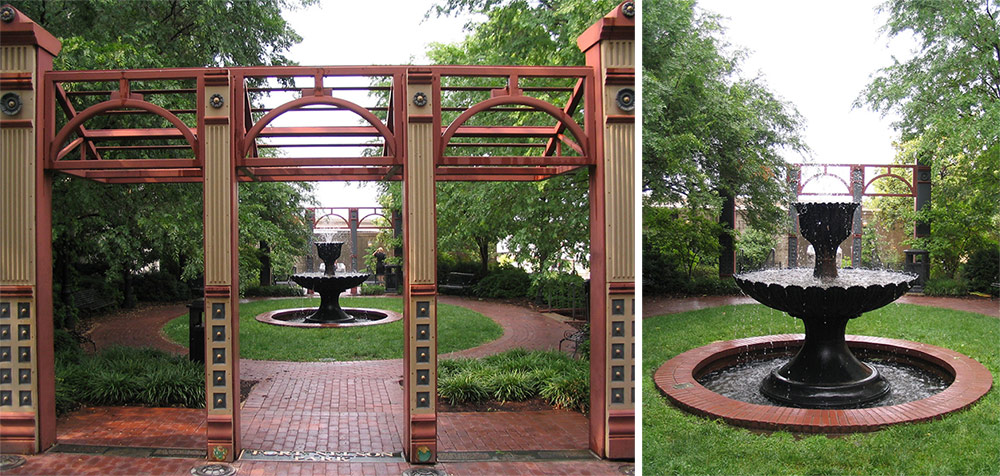
Other architectural elements
Fort Nelson Park Fountain
As long as we’re talking about outstanding building parts, we may as well bring up the Fort Nelson Fountain. Earlier this year, we dug into the history surrounding Fort Nelson and today’s Fort Nelson Park, including the travelling fountain that used to sit in the park. Forged in the 1870s, the fountain was first part of an estate occupied by the DuPont family, later used for Louisville’s Southern Exposition, later placed in front of the courthouse (now Metro Hall), and later still moved to Fort Nelson Park.
The fountain was removed last October and its fountain bed filled with a Japanese maple tree. The city says the fountain is being repaired, but has no timetable for when it might return to public view.
Jefferson Street Bumblebees
We’re having a hard time tracking down a photo of this one, but a building demolished on East Jefferson Street near Brook Street was once clad with ornate terra cotta bumblebees and grey glazed brick. The two- or three-story structure was removed to make way for a parking lot for one of the University of Louisville’s Nucleus buildings, and key ornamental details were apparently saved and at one point were to be included in a new U of L building in the area.
Sources tell us the bees were simply stunning, but we have no details on where they might be stored.
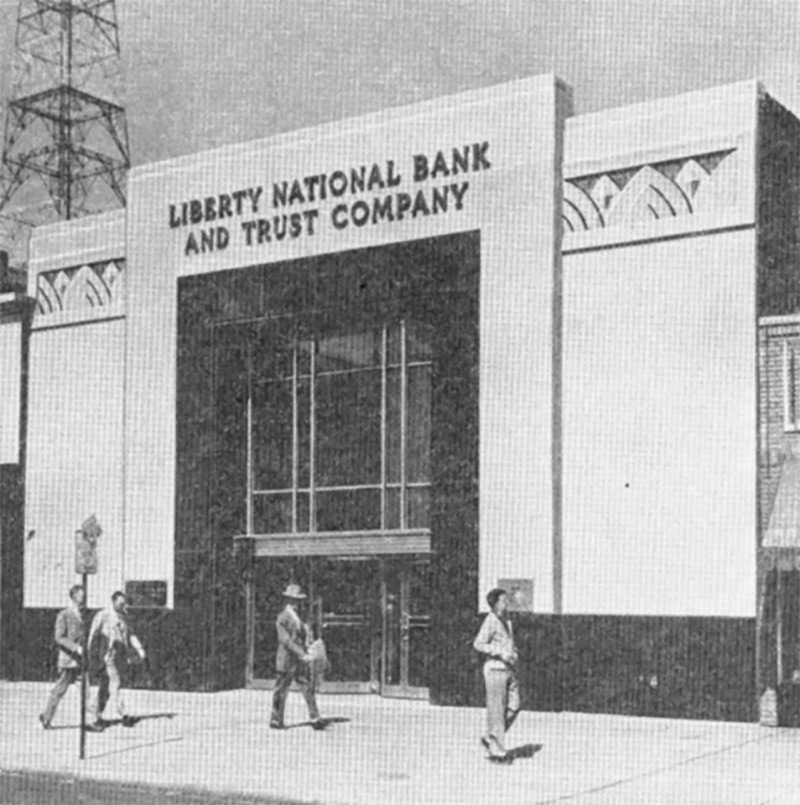
Liberty National Bank on Broadway
Another Art Deco jewel lost but potentially to be found is the old Liberty National Bank that once stood on Broadway between Fifth and Sixth streets. The structure featured a granite and limestone facade with WPA-era murals on the inside. Those murals are long gone, but apparently the facade may still exist. The structure (and a couple others) was torn down for an expansion of the Courier-Journal, but ended up being replaced by a parking lot.



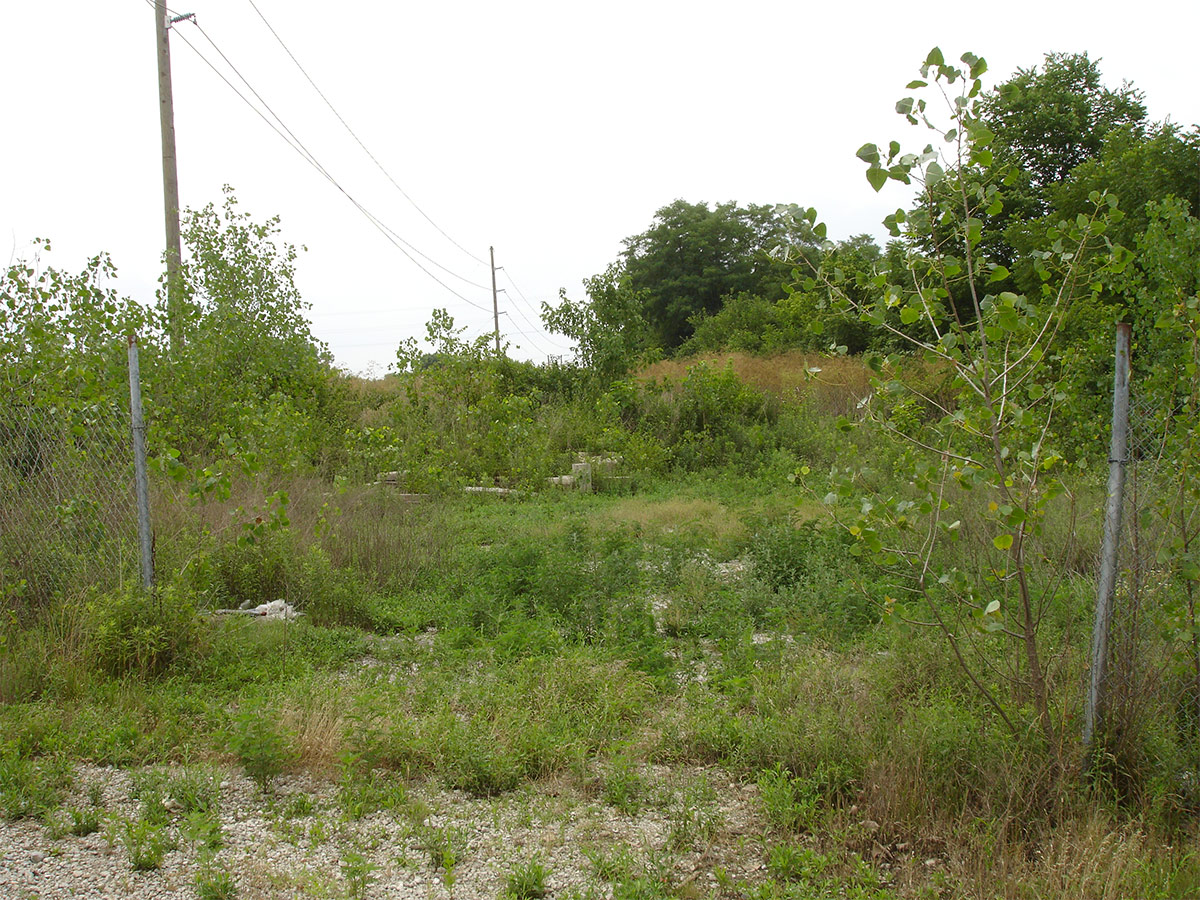

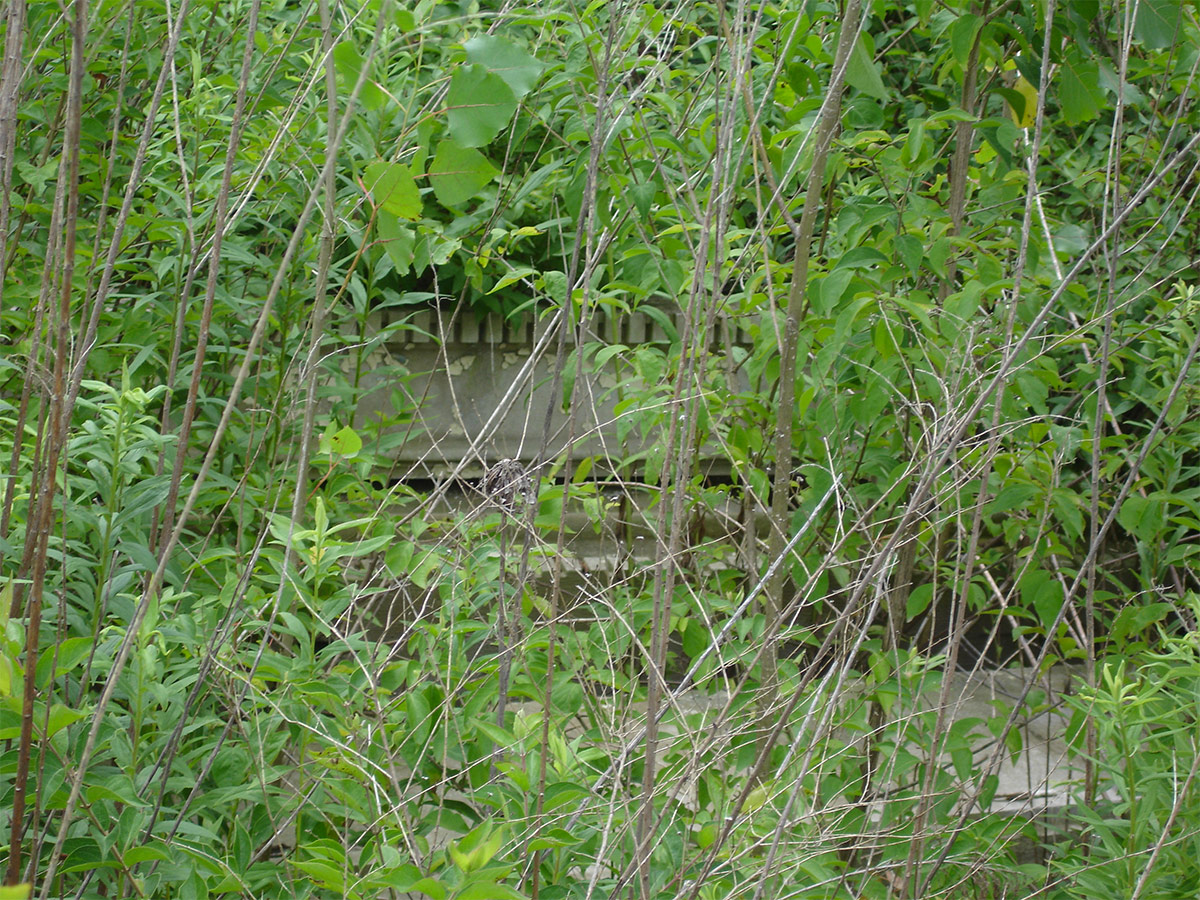
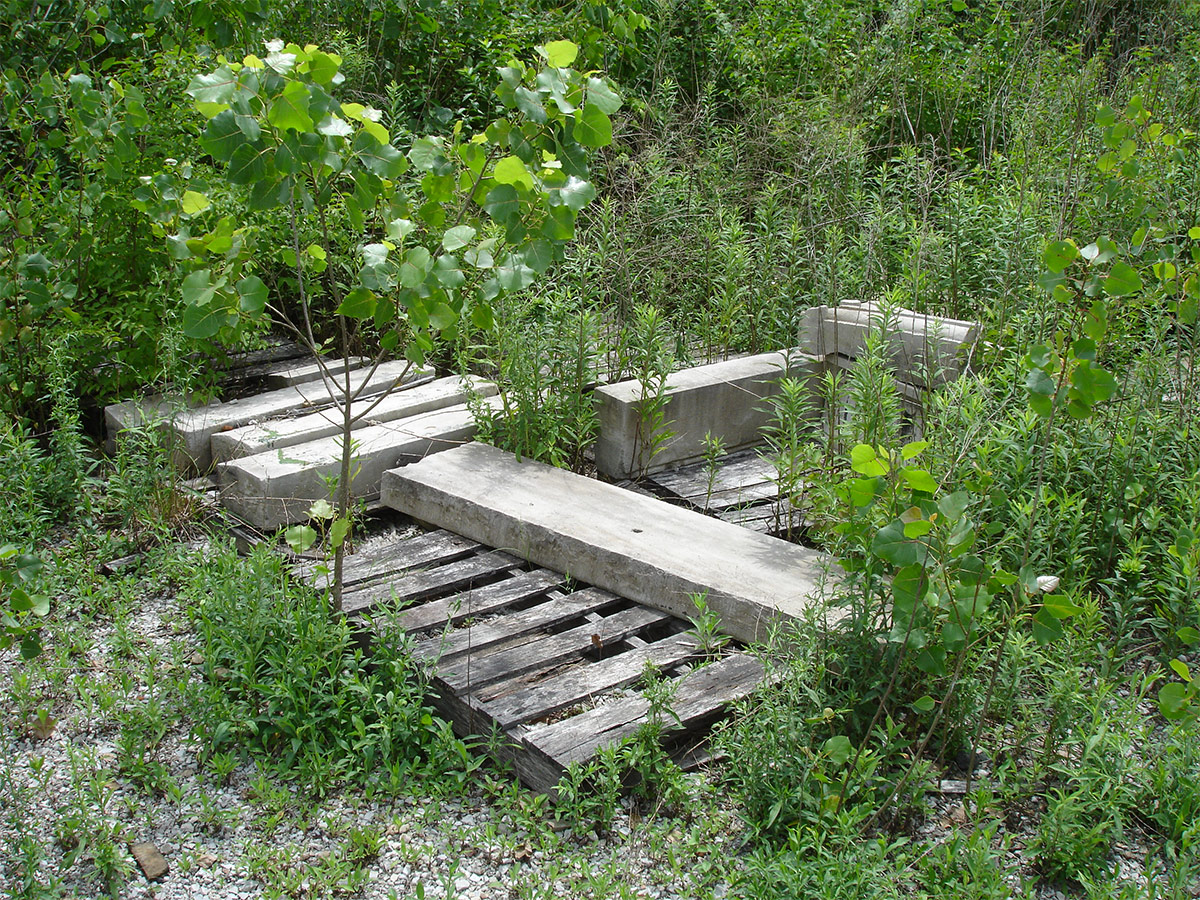
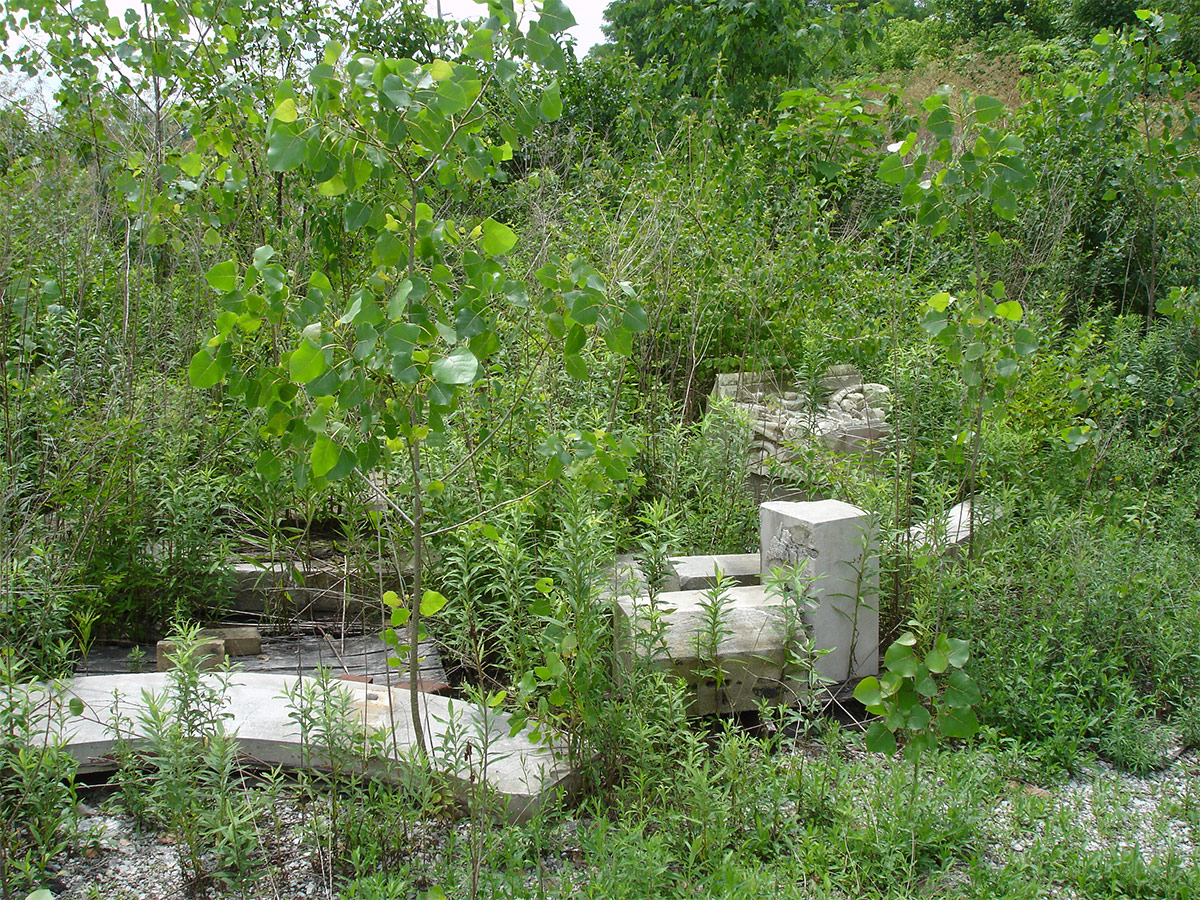
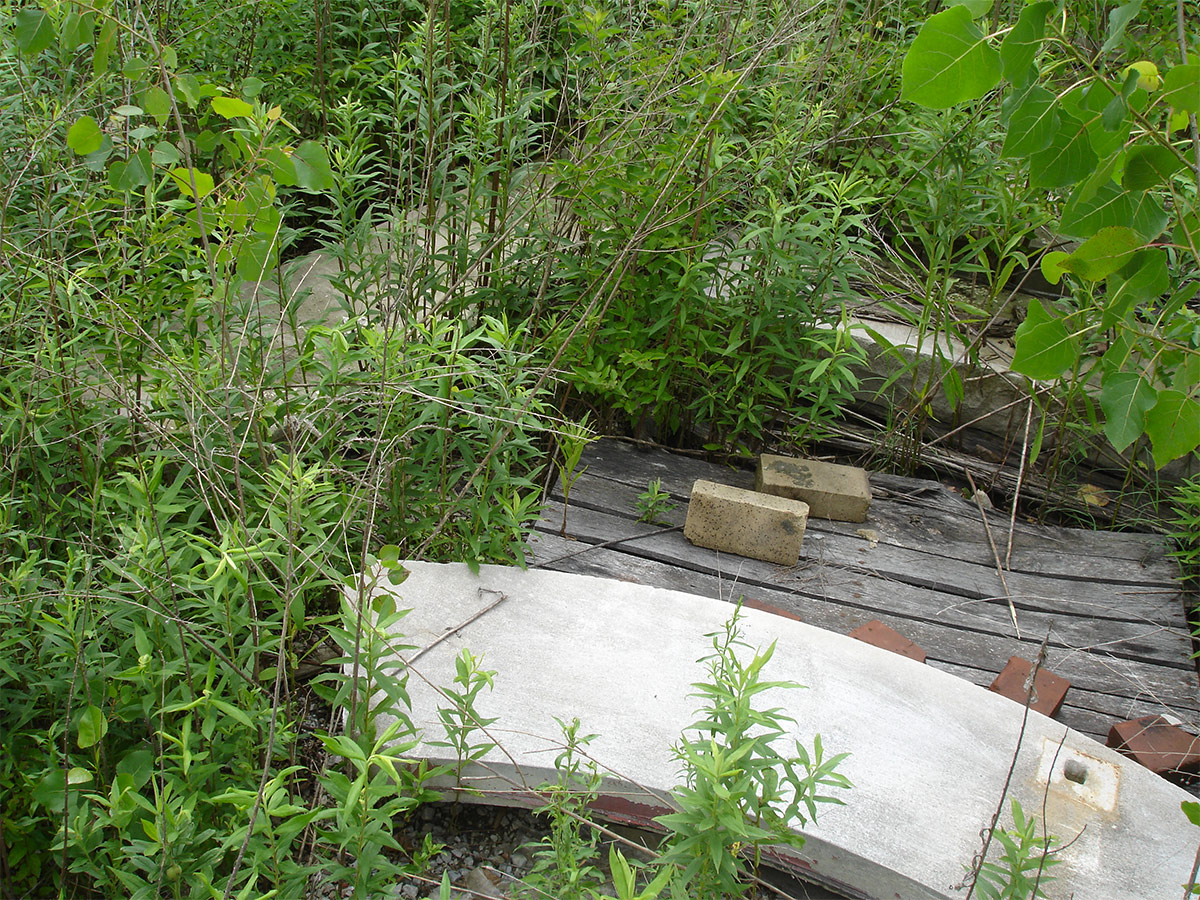
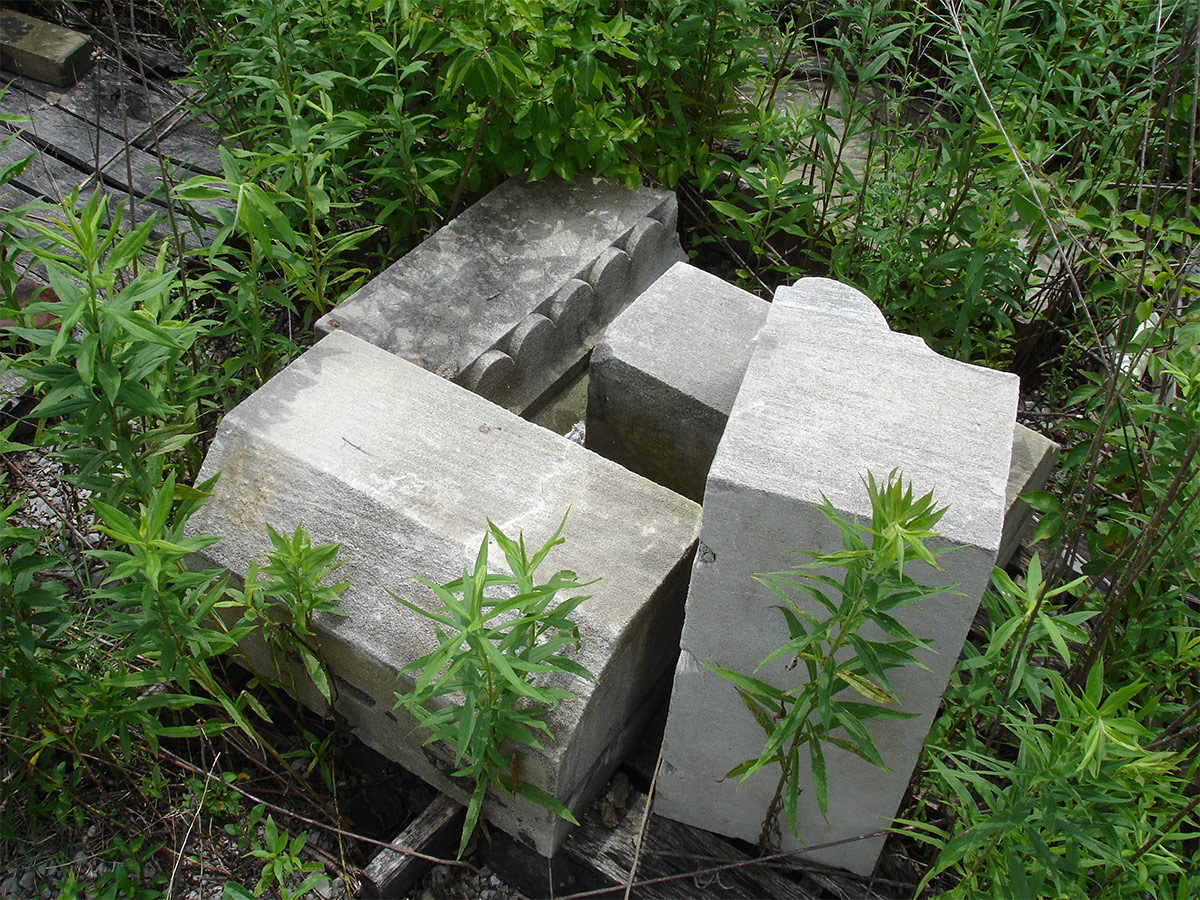
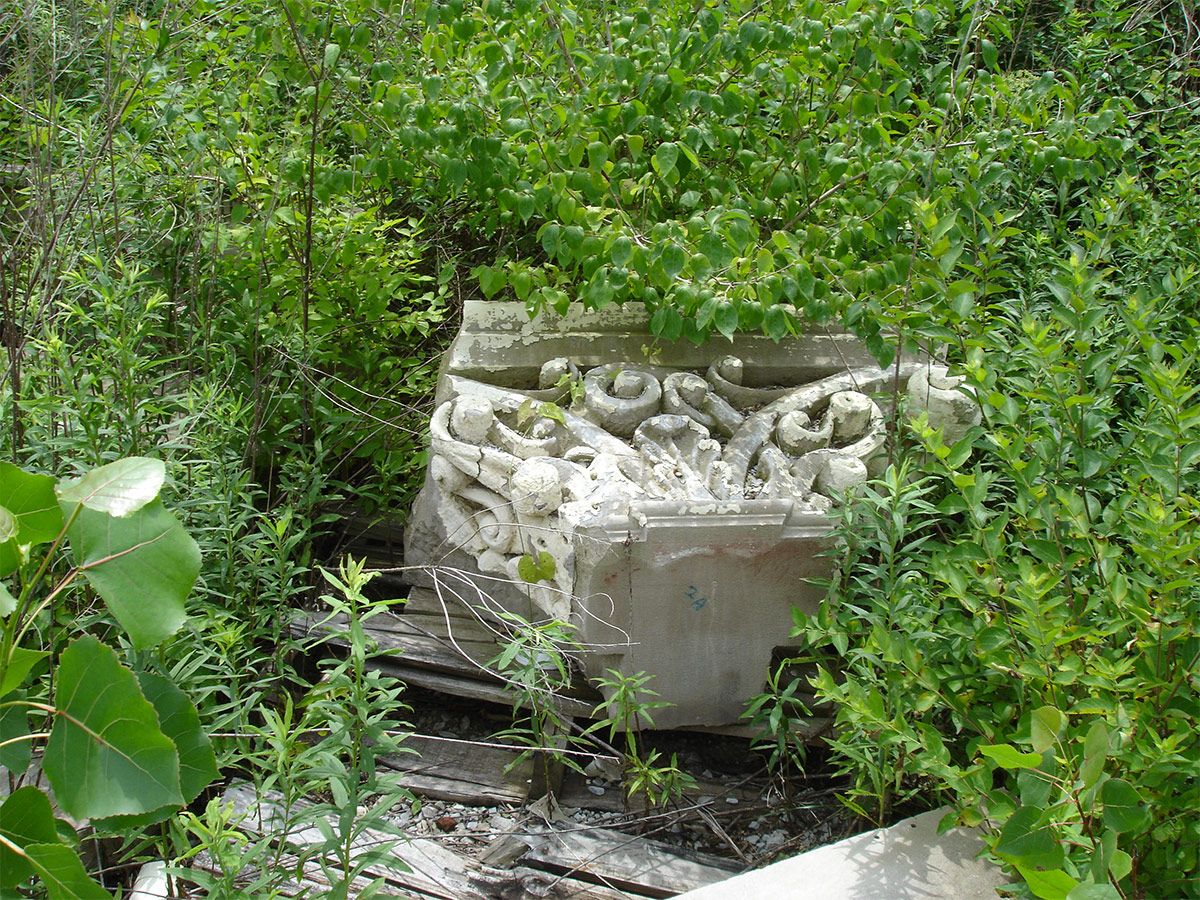

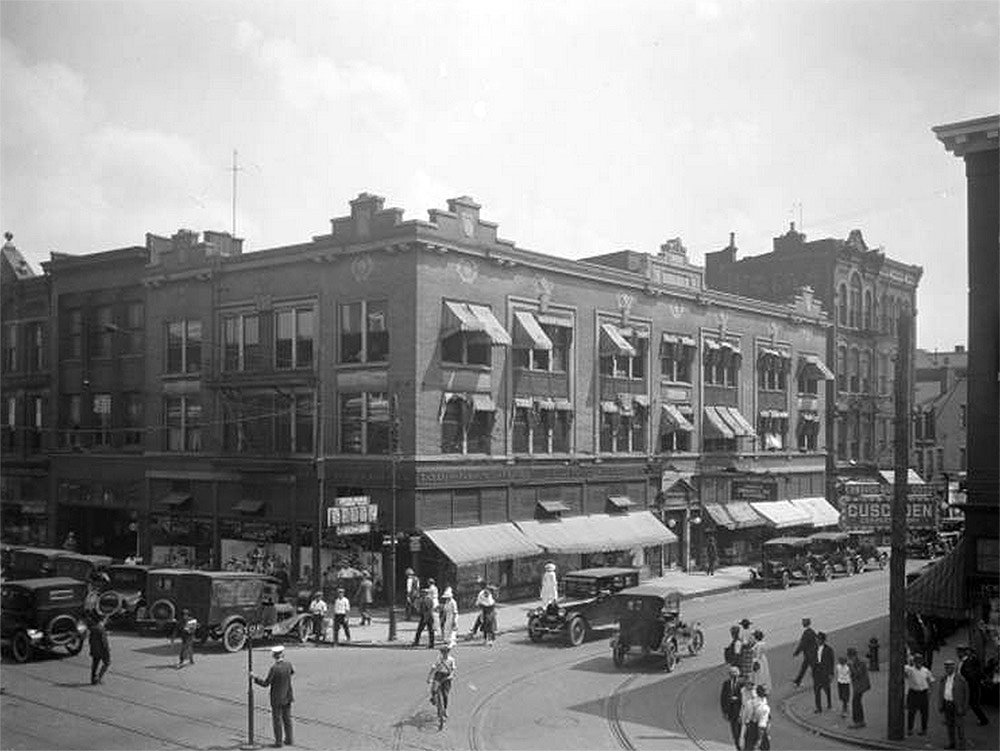
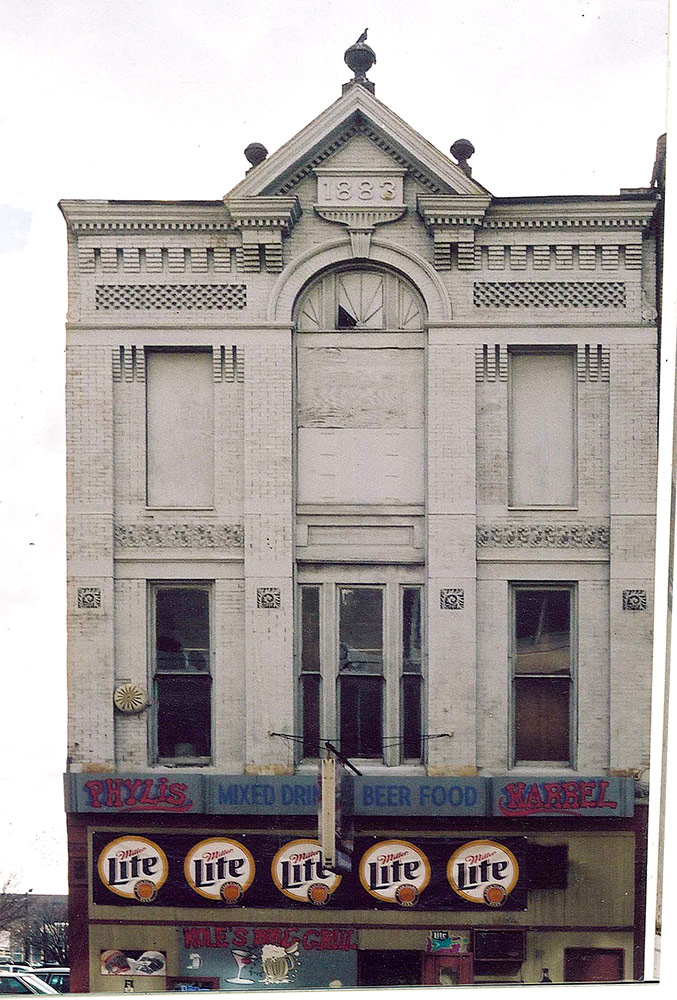
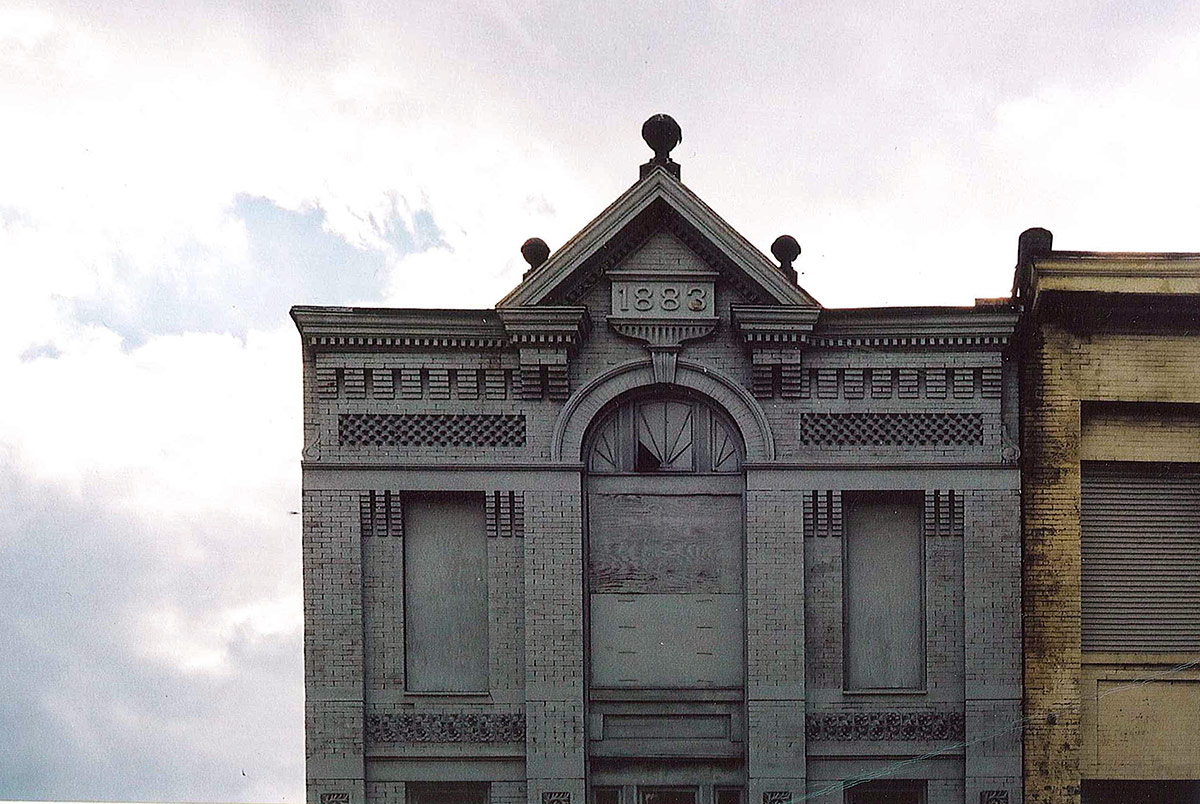

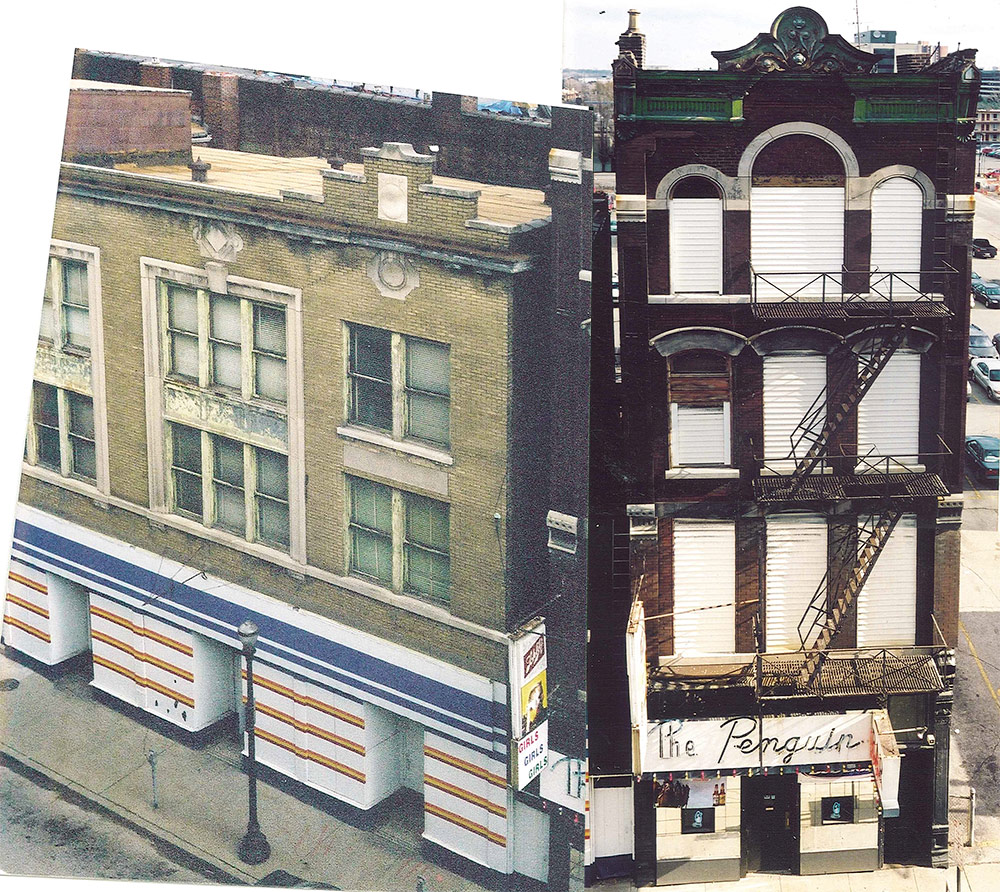
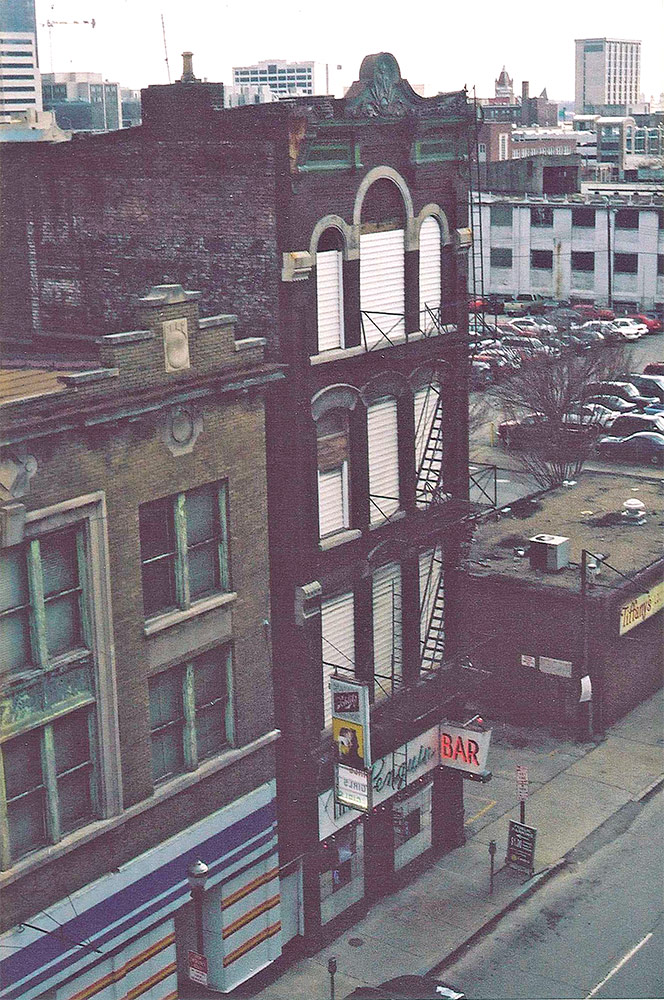
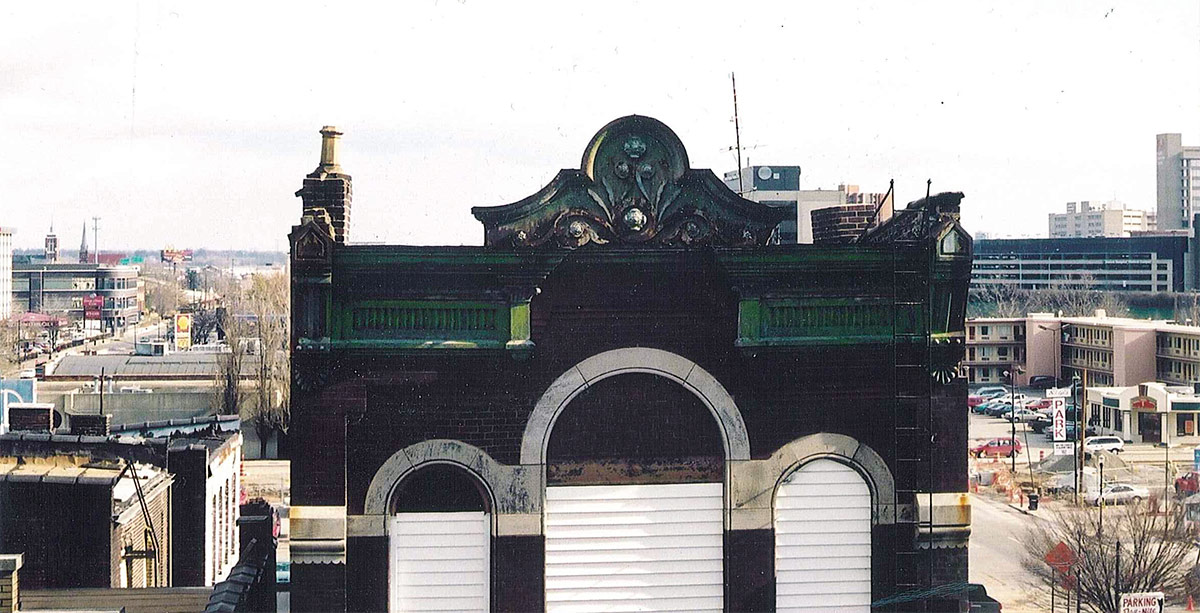
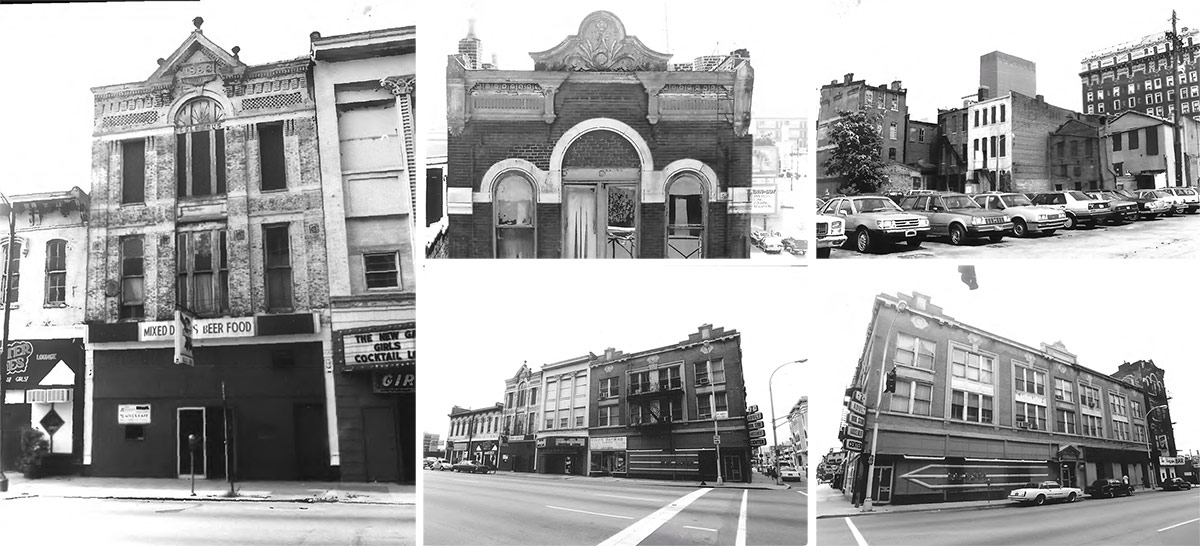
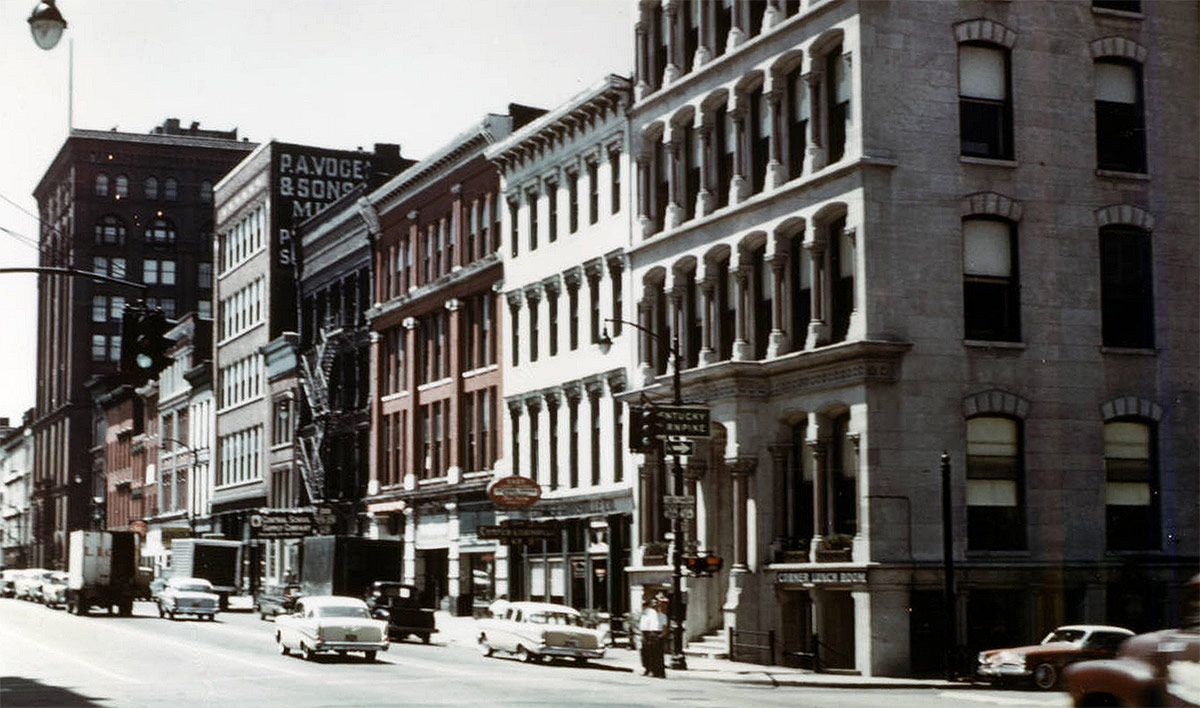

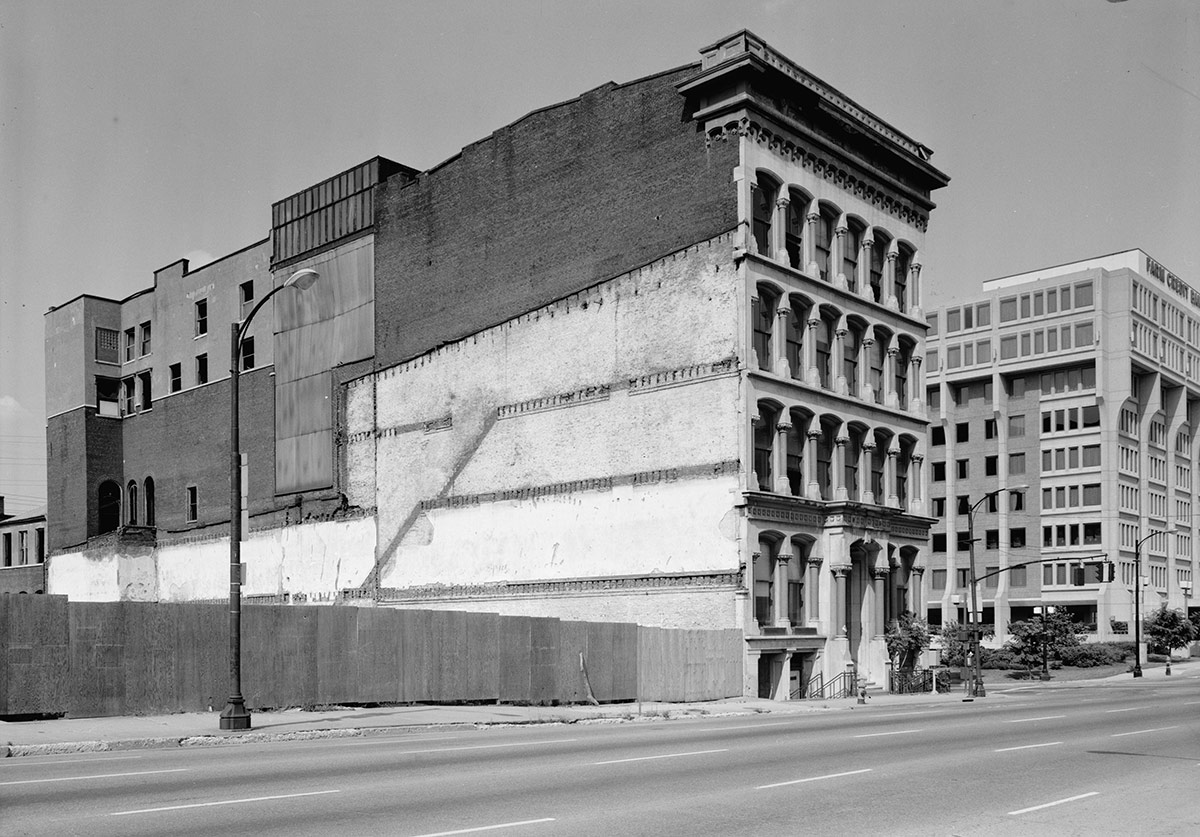
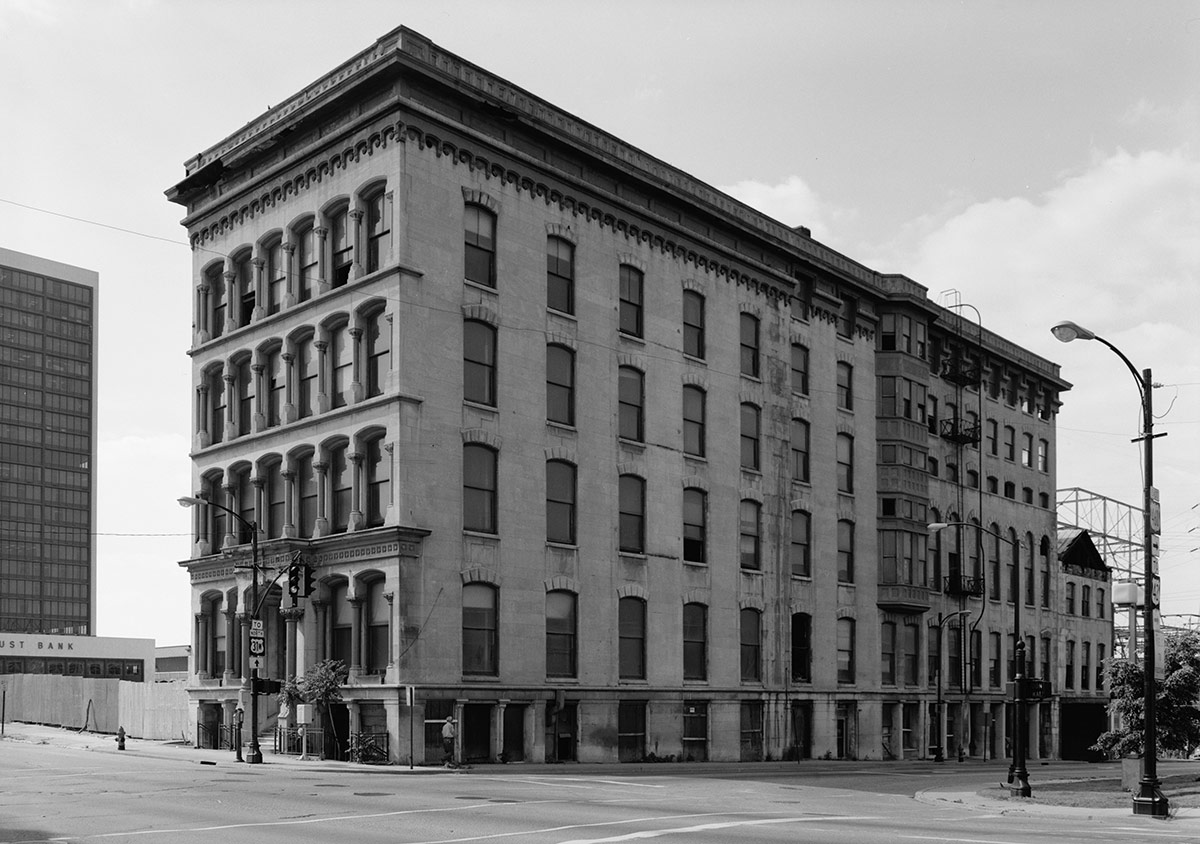

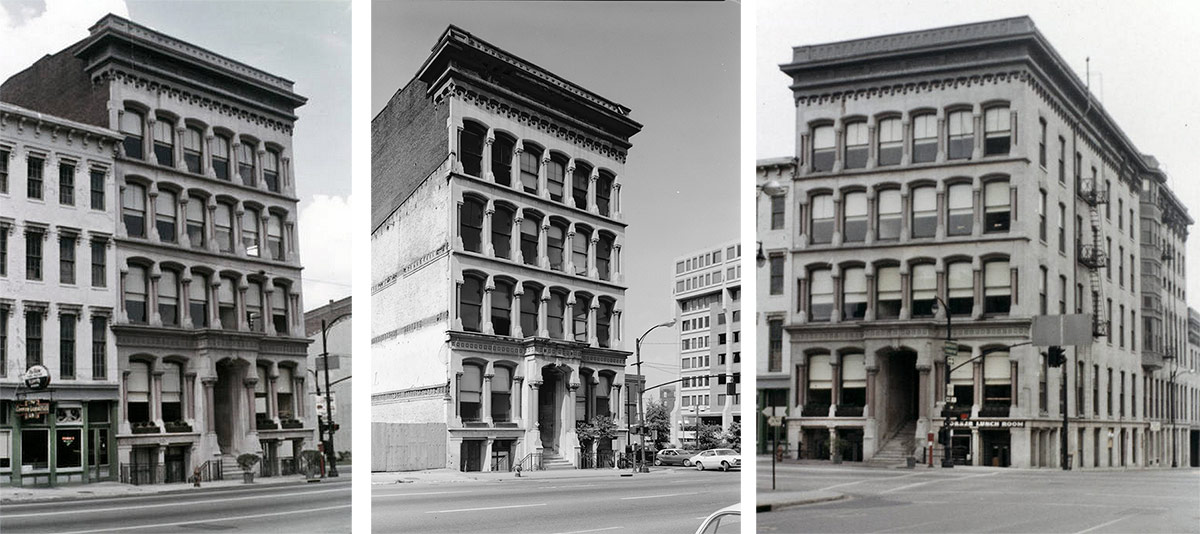
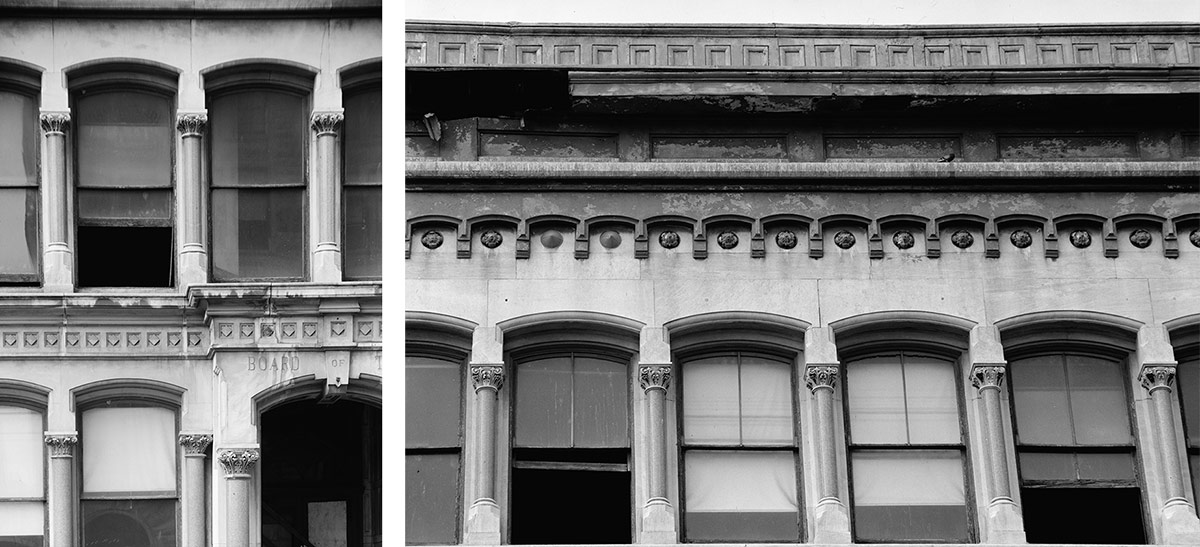

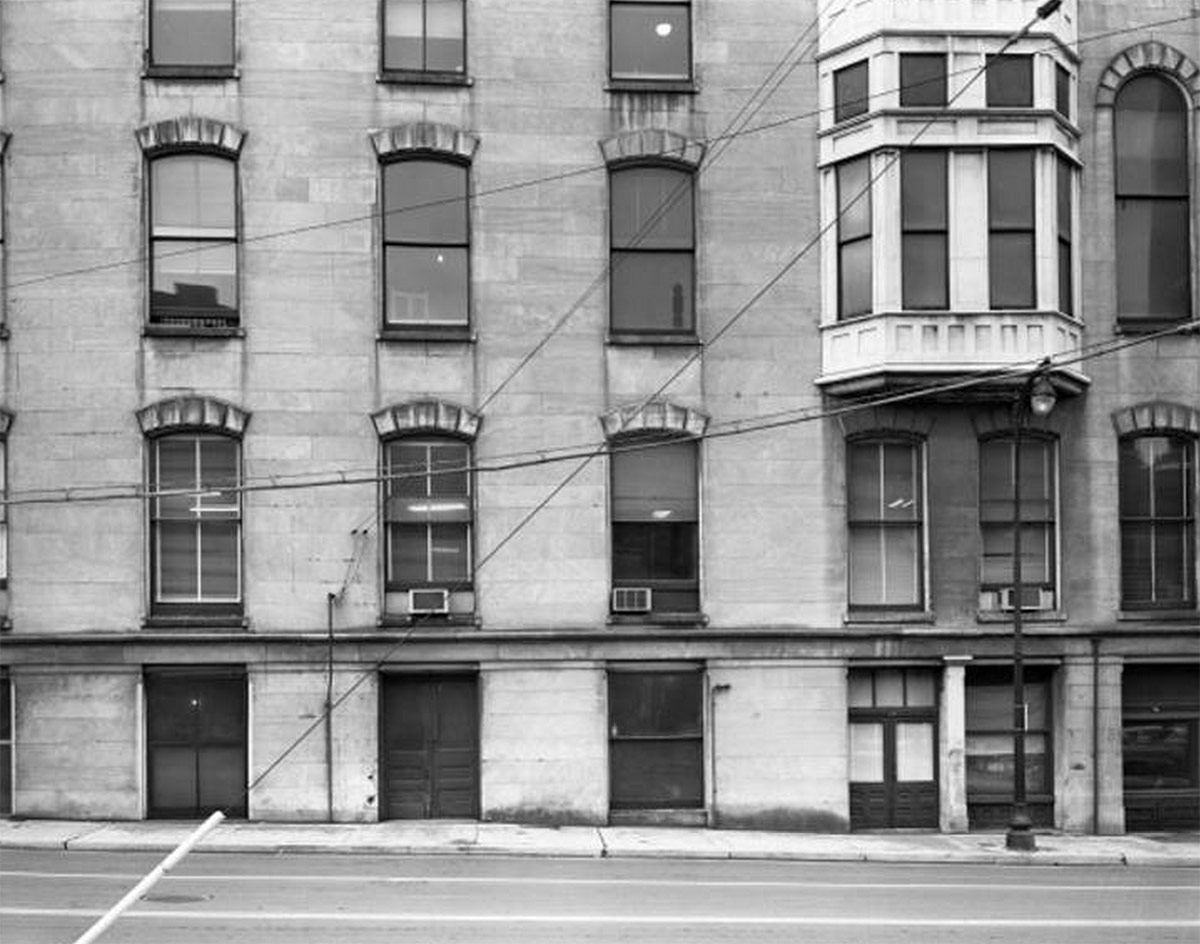
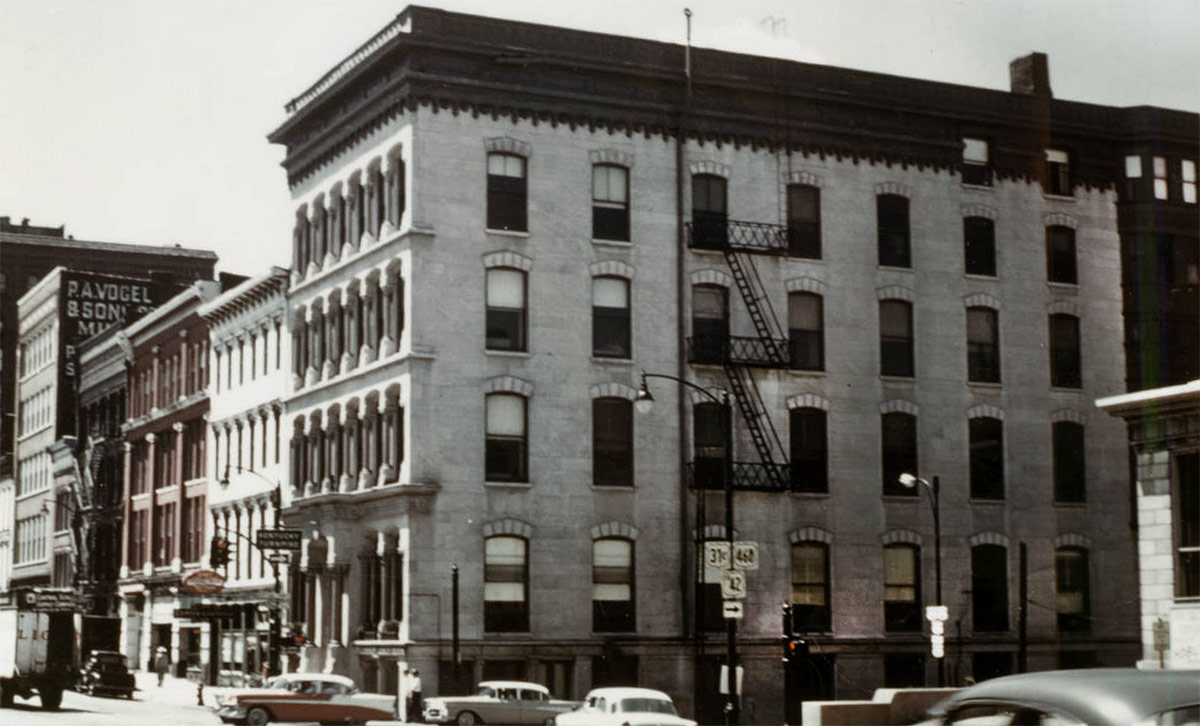
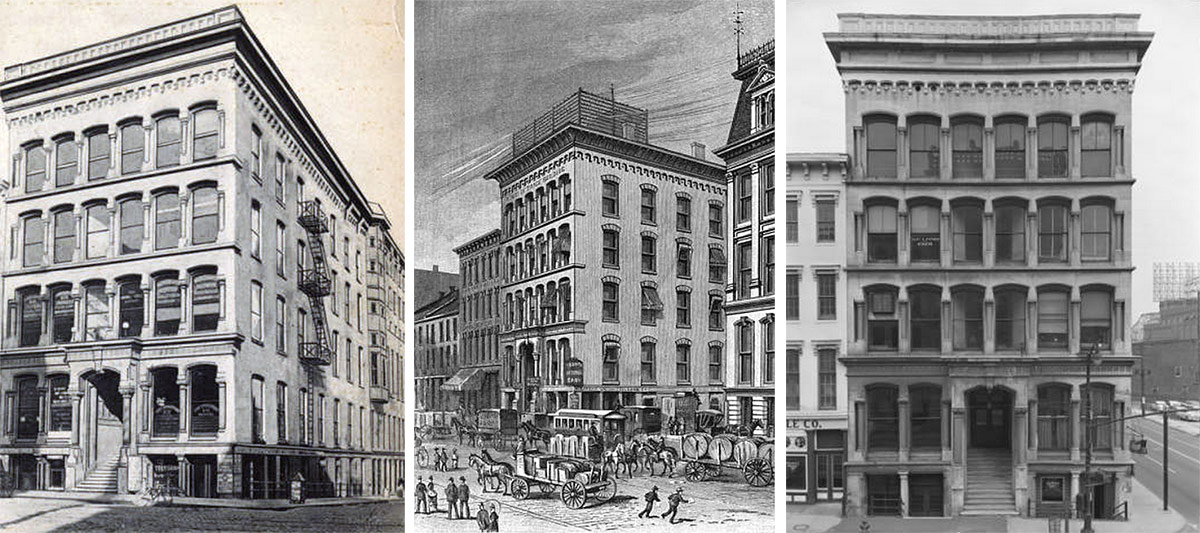

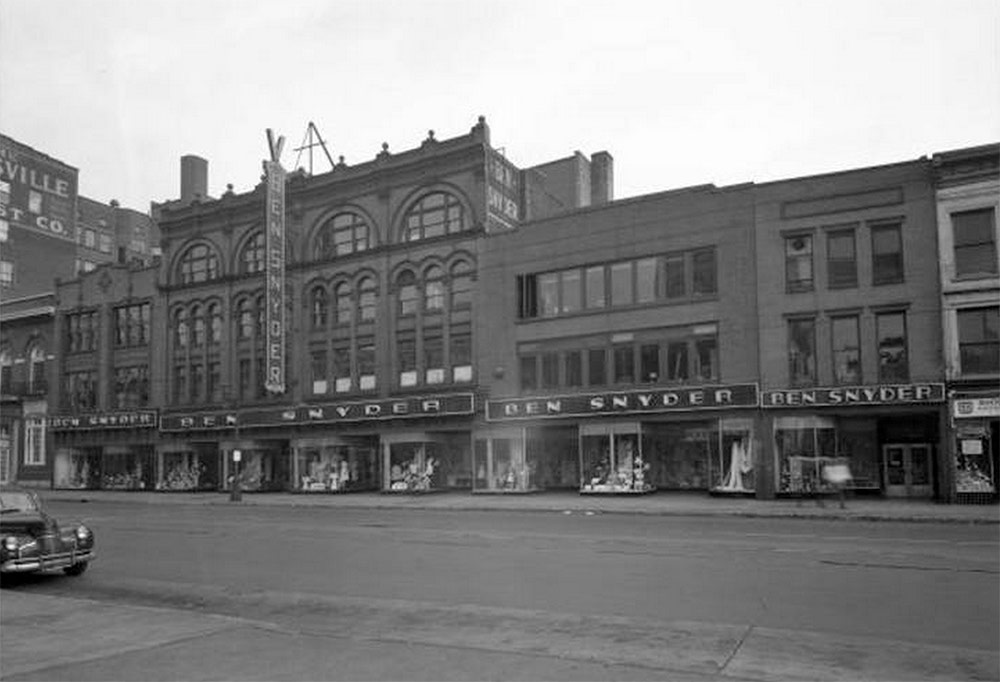
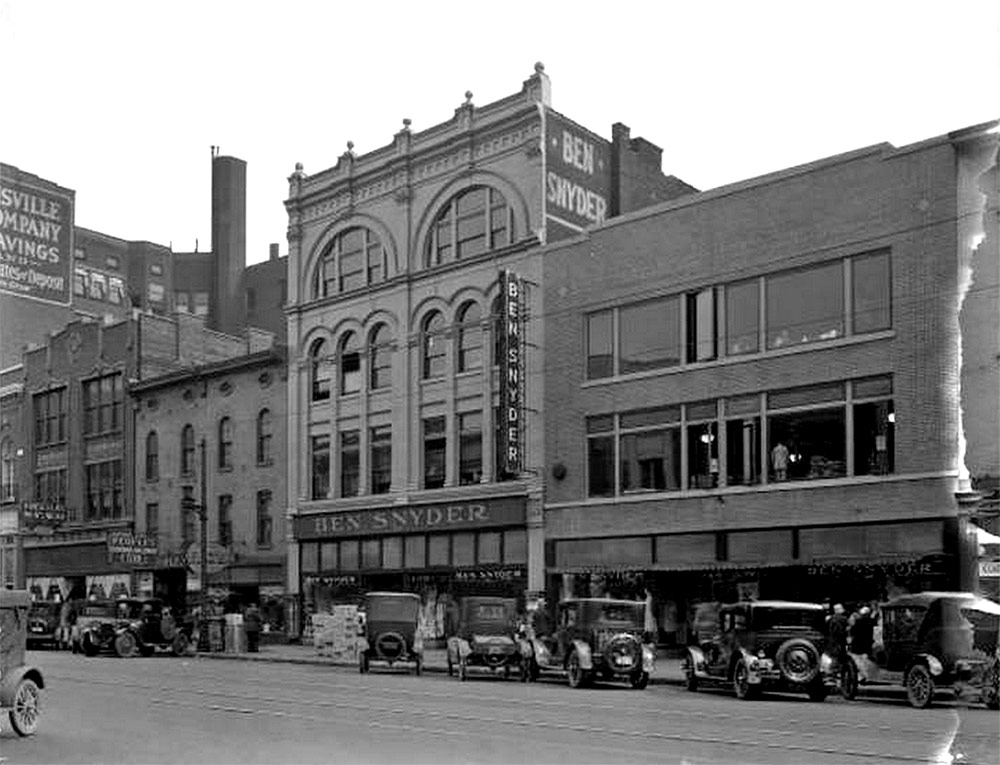

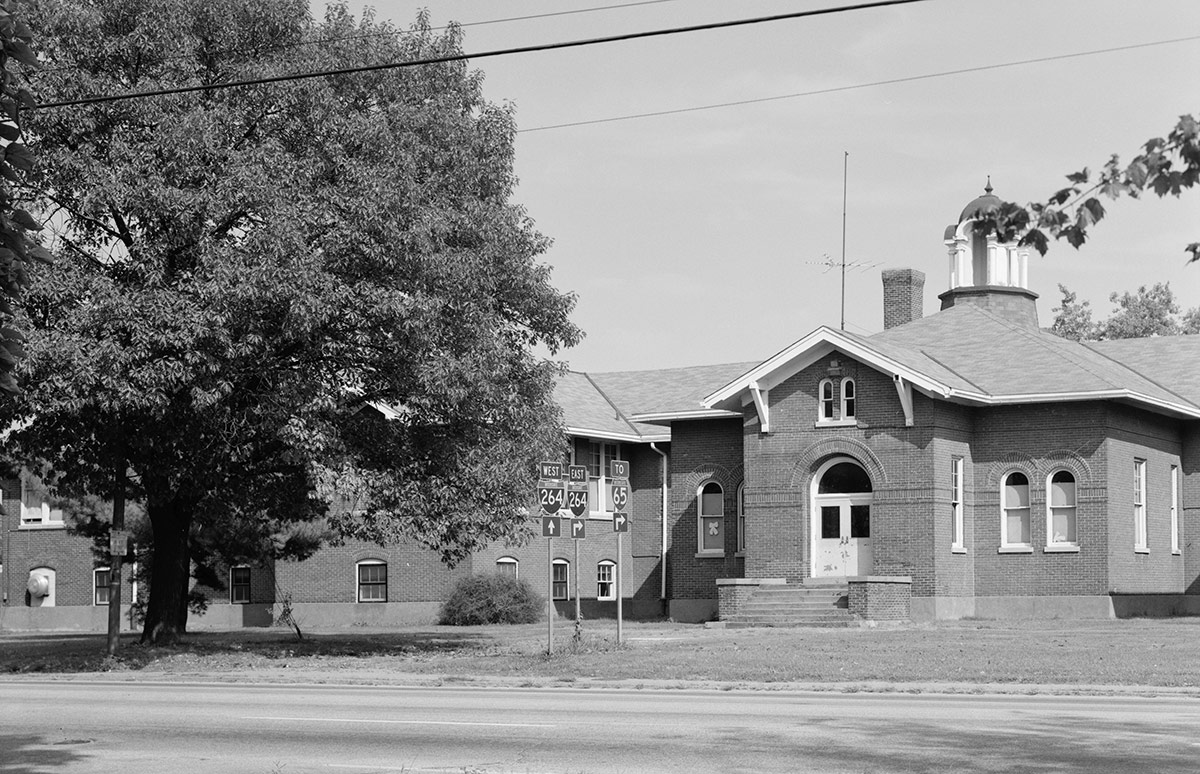

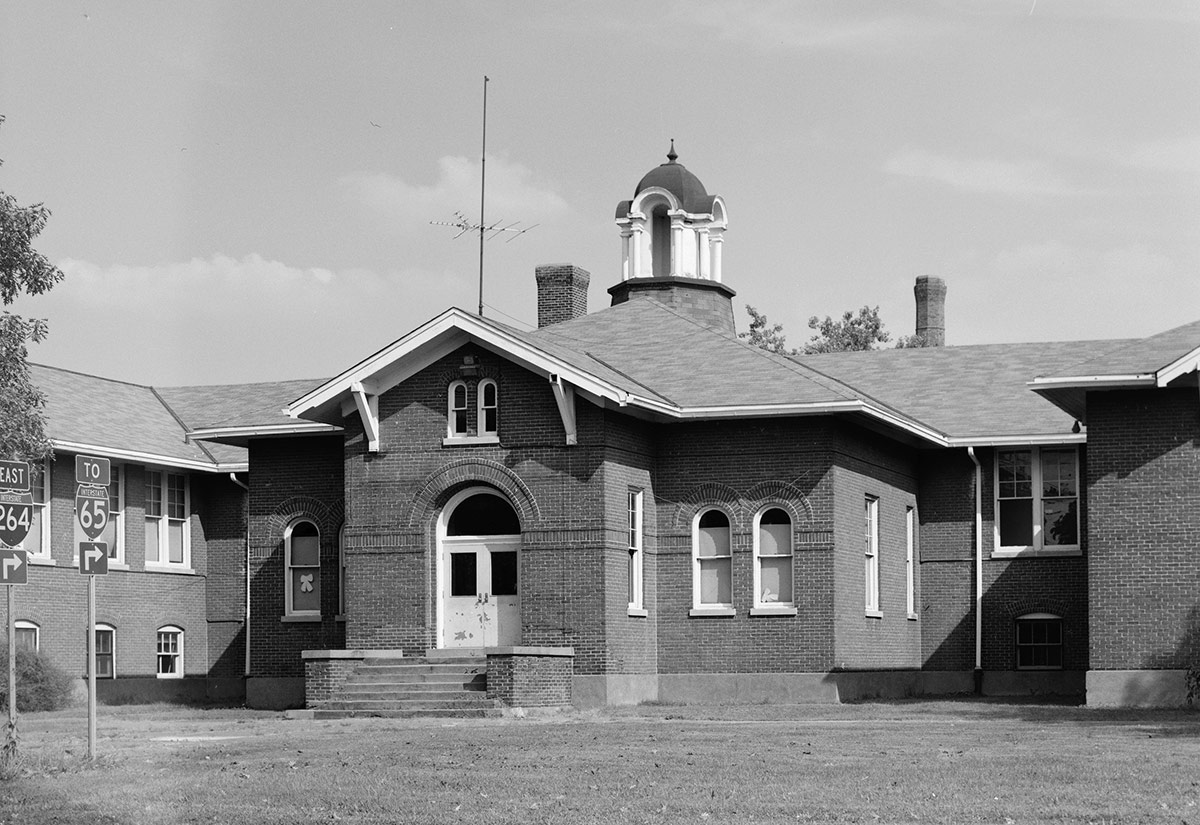
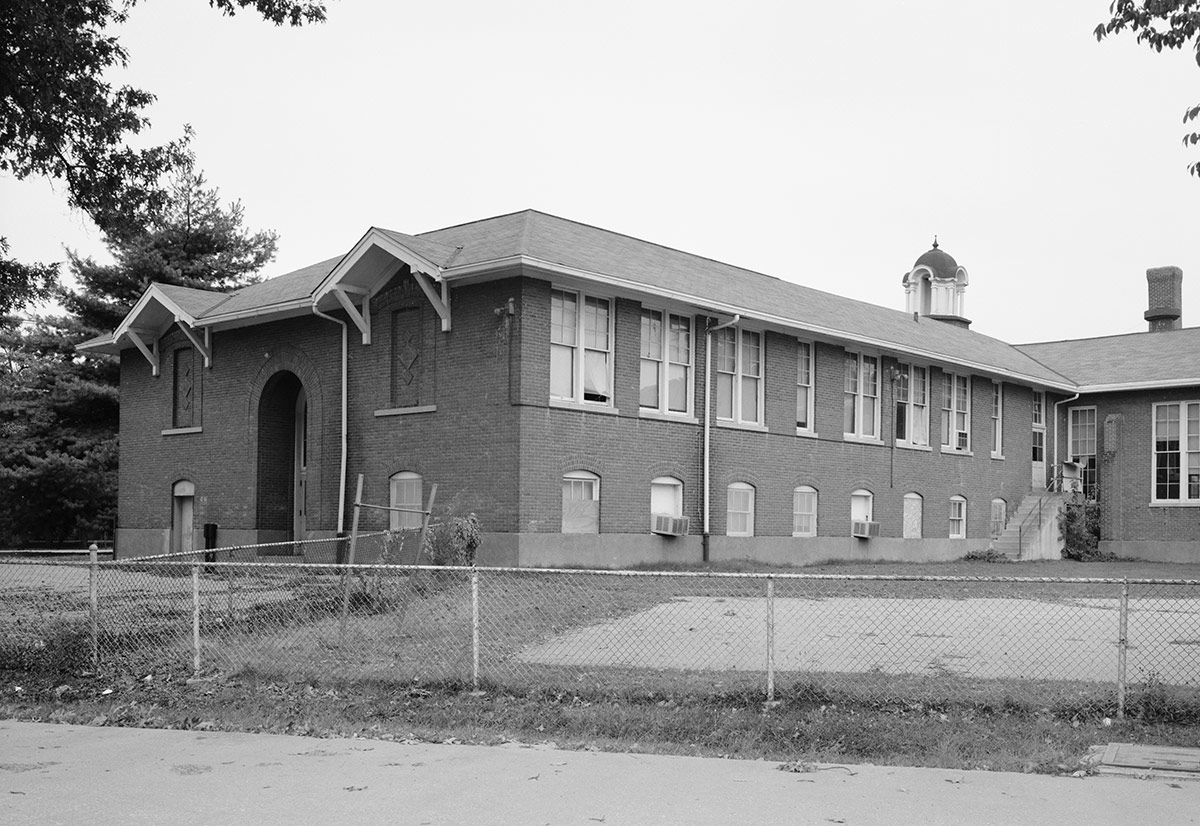
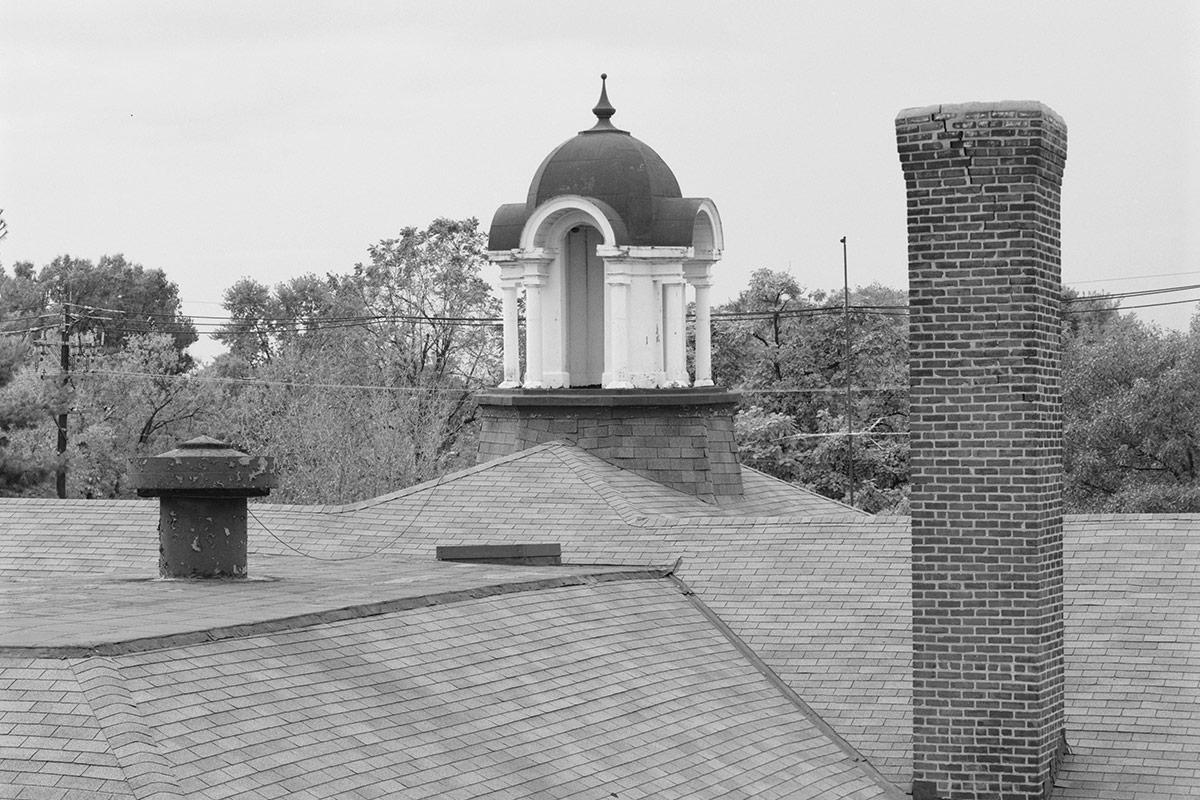
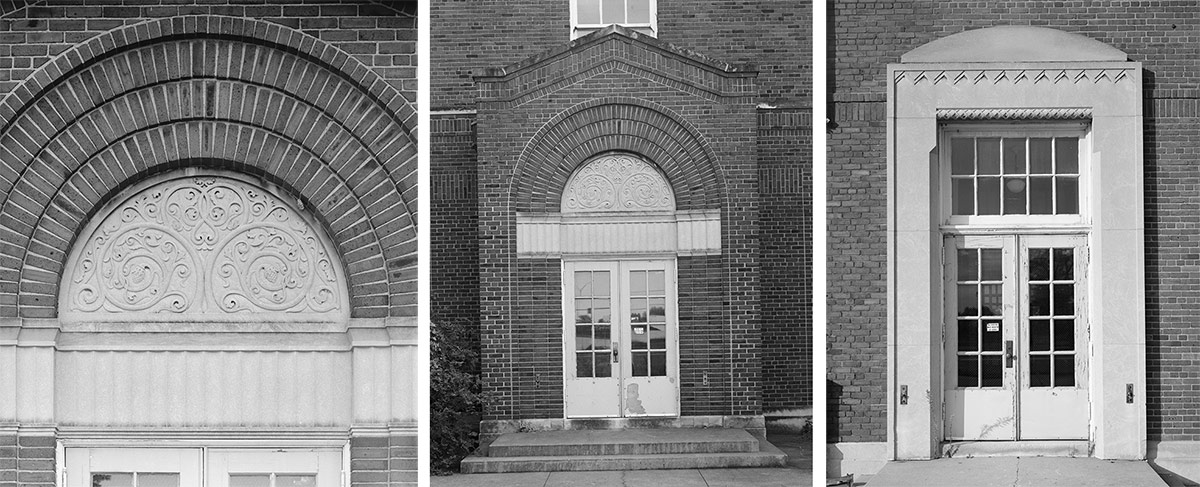
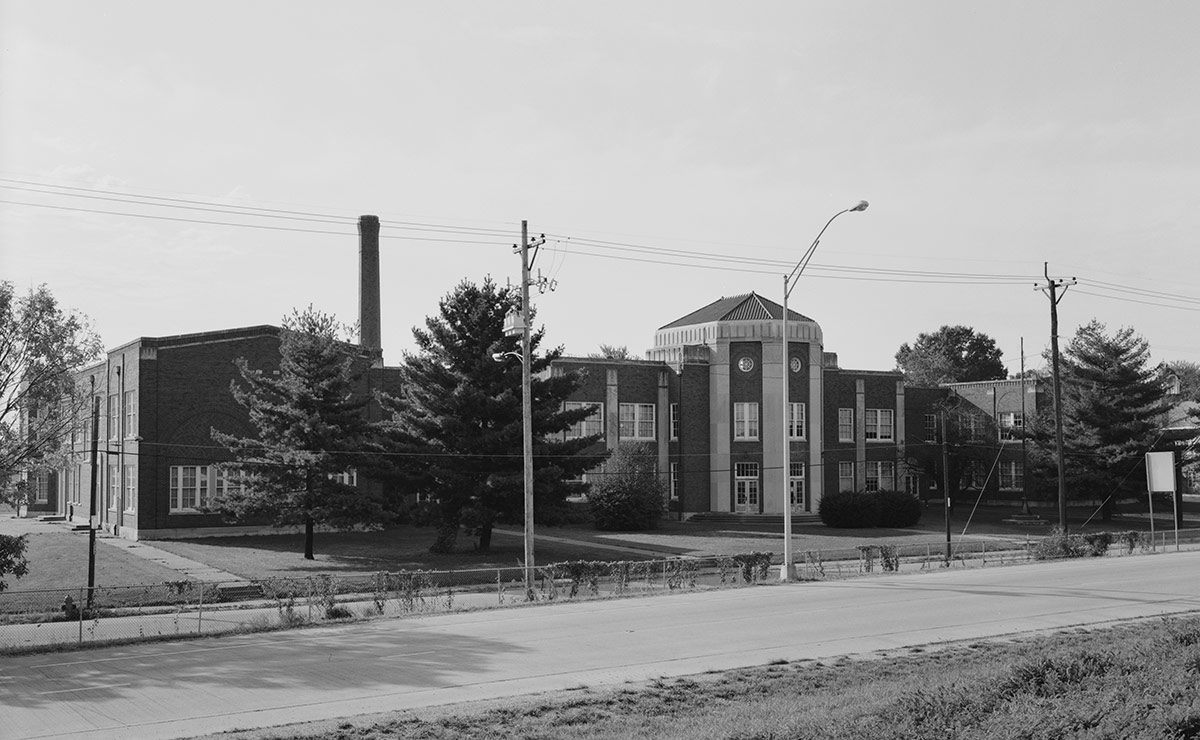

And look how the Marriott turned out, horrendous. This article was a little depressing if informative.
Now I am sad
Thank you for this valuable information and history and for caring of the history of Louisville’s architecture. I graduated from U of L and grew up going to St. George Catholic school, walking from LaSalle street daily with my twin brother.
I appreciate your efforts.
I wonder what happened to the old Norton Memorial Hospital gothic facade on Third St. that the city & mayor promised to rebuild in Central Park as a backdrop for Shakespeare in Central Park!